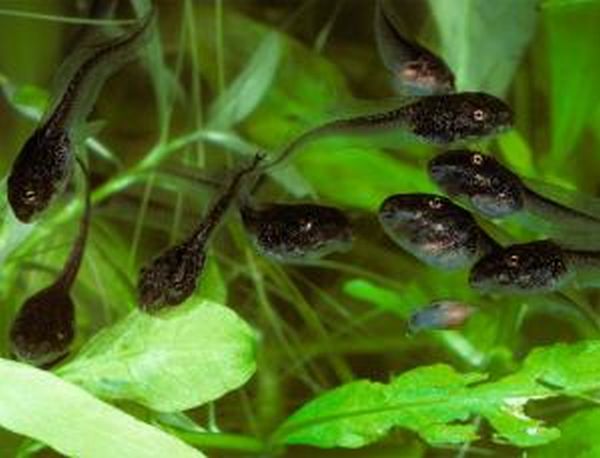Cannibalism in the animal kingdom is very well known fact among the inhabitants. Animals whether big or small in their race for survival, resort to kill their competition by eating them. Animals like jungle king, lions are known to kill the offspring of the revival king to pave way for better future of its own offspring. But researchers say, the behavior of cannibalism can be also seen tiny wood frog tadpoles. These innocent looking tadpoles when hungry can eat other tadpoles present in the pool. Such behavior has also been seen in many other species of frogs, salamanders and amphibians that turn to cannibalizing when competition increases, creating a mismatch in demand and supply of resources.
However, researcher Dale Jefferson from the University of Saskatchewan in Saskatoon, studying these tadpoles says that these tadpoles turn to cannibalism as the last option, only when the competition is high due to which resources available in the pool gets limited. Though feeding on fellow tadpoles is actually very healthy and provides necessary nutrition. But he is still unsure whether the tadpoles prefer eating the meat of other tadpoles in the first place or is it the last option to make.
Voracious Tadpoles
According to researchers, many other tadpole species occasionally choose to eat the members of their own species. But it is still a mystery what makes them turn into cannibals. To find an answer, Jefferson observed wood frog tadpoles, kept in captivity.
Researchers suggest that eating their fellow tadpoles provide them with important nutrients in the right quantity as required by their own body and help them to grow fast. But surprisingly, when Jefferson offered isolated wood frog tadpoles, tadpole meat, he observed that the tadpoles completely avoided to feed on given tadpole meat, until they were famished. This suggests that being cannibal is the last option, like humans under do or die situation.
But the same tadpole meat was quickly consumed by a group of tadpoles living together, signifying that there was a competition among tadpoles, competing for food in order to grow fast and attain maturity first. Also the study showed that the cannibal diet is not quintessential as the tadpoles who were fed a protein rich diet consisting a mixture of brine shrimp and cornmeal, grew faster than the tadpoles feeding on tadpole meat.
Difficult Conditions
Jefferson explains that the tadpoles had to face tough situations. They live in small water bodies that tend to dry up quickly and therefore, in order to survive, they must readily grow or else they would die if the water dries up. Under such a challenging environment, cannibalism helps them to get over their immediate competitors, providing them with nourishment and saving resources, though it may not be the ideal diet.
Cannibalism is not the best option as they are associated with risks of disease transmission. The chances of transmitting infection are higher if the tadpoles are excreting waste in the same water, which contributes to the piling up of chemical waste in the water body. Therefore, tadpoles need to make a decision before the chemicals in the water reach severe threshold and tadpoles turn into cannibals, says Jefferson. They can analyze the situation and then take appropriate step.
Well wood frog tadpoles are not alone who turn cannibals under critical situations, it has been observed that New Maxico spadefoot frog tadpoles after hatching, feed on plants, but if required they too turn into predators. It seems that this species of animals believe in the famous maxim, which goes like, “The weak are meat, the strong do eat”.
Source: NewScientist




